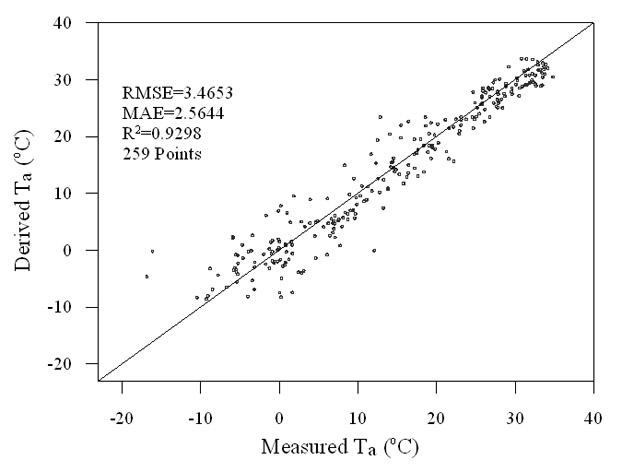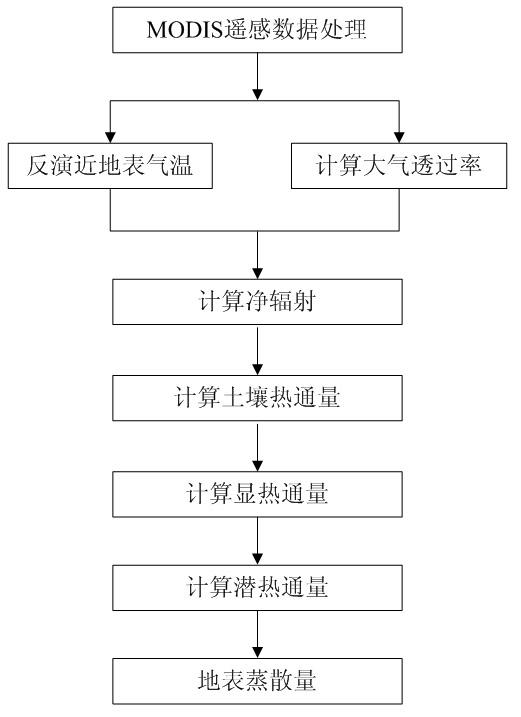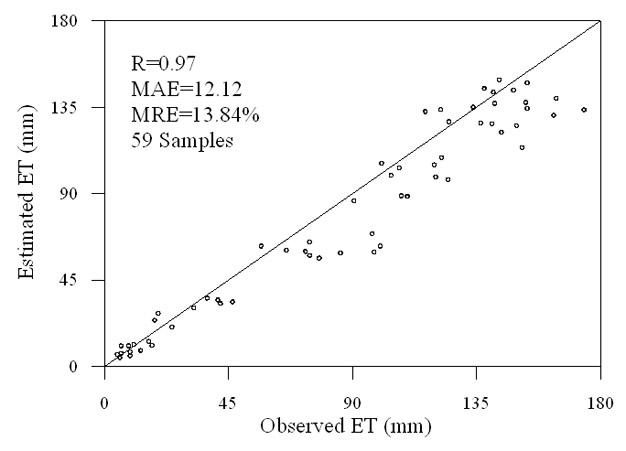Remote sensing inversion method for land surface evapotranspiration of arid and semi-arid regions
A remote sensing inversion, semi-arid technology, applied in the field of surface evapotranspiration remote sensing inversion, can solve the problems of limitations, differences, and less research on remote sensing inversion, and achieve the effect of reducing requirements, good applicability and pertinence
- Summary
- Abstract
- Description
- Claims
- Application Information
AI Technical Summary
Problems solved by technology
Method used
Image
Examples
Embodiment Construction
[0052] Below in conjunction with accompanying drawing, technical scheme of the present invention is described in further detail:
[0053] (1) EOS / MODIS remote sensing data processing
[0054] The EOS / MODIS remote sensing data used in the present invention include land cover products, monthly synthetic vegetation index products, 8-day synthetic surface temperature products and 16-day synthetic albedo products. Firstly, the spatial projection transformation is performed on all the data and unified into the same spatial reference frame; then the vegetation index and surface temperature are declouded by using the time series harmonic fitting method to eliminate the data missing problem caused by cloud coverage. The solar zenith angle data at the time of imaging were extracted from the vegetation index products; the surface temperature and albedo data were then synthesized on a monthly basis to match the NDVI data.
[0055] (2) Inversion of near-surface air temperature and calcula...
PUM
 Login to View More
Login to View More Abstract
Description
Claims
Application Information
 Login to View More
Login to View More - R&D
- Intellectual Property
- Life Sciences
- Materials
- Tech Scout
- Unparalleled Data Quality
- Higher Quality Content
- 60% Fewer Hallucinations
Browse by: Latest US Patents, China's latest patents, Technical Efficacy Thesaurus, Application Domain, Technology Topic, Popular Technical Reports.
© 2025 PatSnap. All rights reserved.Legal|Privacy policy|Modern Slavery Act Transparency Statement|Sitemap|About US| Contact US: help@patsnap.com



